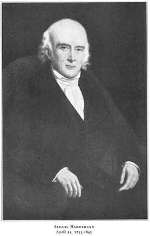The name "homoeo-pathy derives from the Greek words "homoios" for similar and "pathos" for suffering or illness.
 Samuel Hahnemann, the developer of the modern homeopathic method of medicine, discovered in 1827 that when he diluted a remedial substance and then shook it or knocked it and repeated the process of dilution and shaking or knocking several times, the end result was a remedy which had lost its toxicity and simultaneously had acquired a stronger medicinal property, a greater curing effect. That is why he called this processing "potentizing. Samuel Hahnemann, the developer of the modern homeopathic method of medicine, discovered in 1827 that when he diluted a remedial substance and then shook it or knocked it and repeated the process of dilution and shaking or knocking several times, the end result was a remedy which had lost its toxicity and simultaneously had acquired a stronger medicinal property, a greater curing effect. That is why he called this processing "potentizing.
The dilution was either in alcohol-water or in milk sugar/lactose. One part substance (mother tincture or trituration powder) against 99 parts neutral base (alcohol water or milk sugar) is called C1 for centesimal 1, i.e. is a 10 power minus 2 dilution.
According to the law of Avogadro, in all probability no molecule remains when a substance is diluted beyond 6x20 power minus 23. So-called high potency homeopathic preparations (dilutions) always reach the point of no-substance-anymore.
Hahnemann realized this and concluded that when no substance is left, something else must be at work. This seems to have puzzled him as much as it would puzzle most of us today, but the findings of the provers and the success in clinical use of the remedies proved that, after all, something was at work. This something Hahnemann called a non-material life force.
|